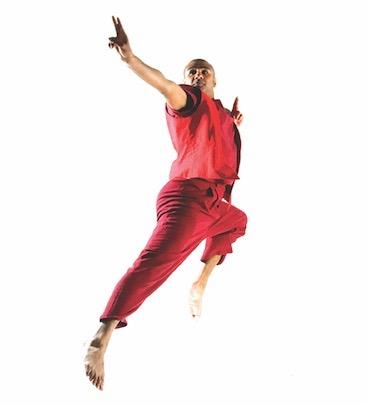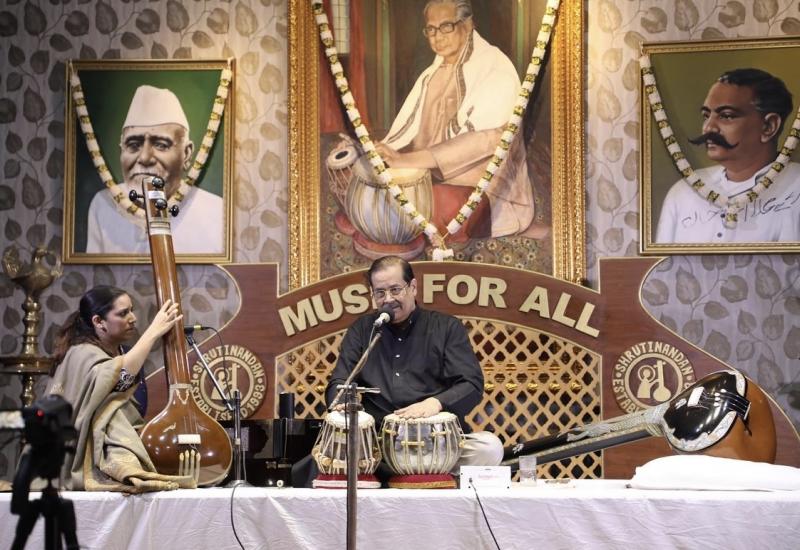Maker and Shaker: Shane Shambhu
Shane Shambhu was the dancer featured on the first cover of the revamped Pulse magazine in Summer 2008. During the ten years since he was interviewed for that issue, this dancer-choreographer, actor and theatre director has been carving out his own unique space as a performer. The years spent in intense mining of the subject and honing his craft have resulted in the depth and clarity of his current work, Confessions of a Cockney Temple Dancer, which is being widely enjoyed and praised.
It’s a good moment to share that article again.
By Sanjeevini Dutta
I met up with Shane Shambhu at the café of Stratford Theatre where he has been holding a final wrap-up session with their dance department following a residency. Shane takes a sip from a large goblet of Cabernet Sauvignon as he unwinds on the eve of a well-deserved holiday trek in Nepal.
I am curious to know how Shane has been propelled from being a senior student of bharatanatyam teachers Pushkala Gopal and Unnikrishnan to forming his own company, choreographing, writing and directing his first full length show, ‘India Calling’ which will be touring in Spring 2009.
'From the age of thirteen I had an inner belief that one day I would have my own company and tour with it.' He had to wait another decade and a half for that to become a reality. Meantime, as a good Malayalee boy, Shane did his ‘A’ levels and then went on to University, hopping subjects from Engineering to Education Studies. But he was restless for something indefinable. He was still working hard at his bharatanatyam, teaching and performing solo slots at his school’s annual shows. Then something snapped him out of his rut. Friends Jade Marawala and Jonathan Grieve of theatre company Para-Active, challenged Shane to grasp his destiny. He gave up his marketing job and devoted himself to dance.
Between 2001 and 2003, Shane took up whatever dance job that came his way. 'I have a memory of myself dancing on the concrete between two tower blocks in East London.' Shane was doing straightforward bharatanatyam at this point. 'I could not break out because of my limited dance vocabulary.'
Opportunity arose in Autumn 2002, when Magdalen Gorringe was auditioning with Shobana Jeyasingh Dance Company and asked Shane along. In the following January, Shane got his call from the Company and the doors started opening. For the next four years Shane became a company dancer with SJDC.
'I was like a sponge, I kept my head down but observed and learned'. Shane recognises the massive contribution of SJDC in his growth as a dancer. 'I received solid contemporary dance training; I learnt professionalism, I learnt production values, I learnt the business of making and touring and everything else that you need to be a professional artist.'
For the next four years, Shane worked on six-month contracts with SJDC. He was exposed to the movement vocabulary of other choreographers as well: from Van Huffel he learned release, from Rashpal Bansal a good grasp of lifts and Lisa Torun floor work. We discussed the demands of technique when moving from a BN base to a wider movement spectrum required of a contemporary Company such as SJDC. 'BN (as Shane refers to bharatanatyam) is the best style for precision, strength and solidness, but watch those quads; they need stretching with yoga. Release is a completely different way of moving, you have to break out and become loose.'
On a parallel inner journey, Shane alternated his six-monthly stints at SJDC with other projects: Choreolab at Sampad, with Nahid Siddiqui as mentor, a tour with Vayu Naidu’s storytelling company. Shane continued to layer experience and learning. He acknowledges Vayu Naidu as an important figure in his intellectual development as a dancer. 'She made me aware of examining the stimulus for movement.'
Going back to SJDC was like going back to school – being told what to do. 'I danced and danced and learnt and learnt until I felt there was nothing more to gain from this experience any more.'
Shane got an Arts Council award to create his first solo piece ‘impermanence’, which explored the links between Hinduism and Buddhism. Shane used BN with contemporary movements: the pace and contrast were exciting and audiences seemed to enjoy it. Decibel Live and x/trax asked for the piece, Derby Dance Centre offered an artist- in-residence position and ‘impermanence’ toured many major cities and theatres. During the touring of this work Shane managed to receive an additional artist-in-residence placement at Leicester Haymarket Theatre and a Bonnie Bird Choreography Award. The experience of creating and touring ‘impermanence’ made me aware of the big picture. 'I did a piece about Hinduism and Buddhism, who cares about that?'
The next huge break was being picked by Theatre de Complicite to play Ramanujan in the triple award-winning ‘A Disappearing Number’. This physical theatre company, an outstanding force in the creative world for two decades, became an invaluable training ground for Shane. 'Complicite have played the largest part in my life as an artist. I have learnt massive amounts in structuring. Every detail has to be cohesive, nothing is accidental, everything is done for a reason.'
The Complicite training equipped Shane to undertake his next project: a dance theatre piece that tackles the phenomenon of Call Centres in the Indian subcontinent. He choreographed, wrote, directed and dances/ acts along with two other dancers in ‘India Calling.’ Future projects include creating a work that is a performance-installation collaborating with visual artist Dinah Casson ‘and so to bed...’, an explorative project working with lifesized puppets with Sean Myatt and doing a radio play for BBC Radio 3. With the Sauvignon almost finished, the work behind him, the holiday beckoning, Shane relaxes back into his chair, 'I am being me, I am being who I am.'



















